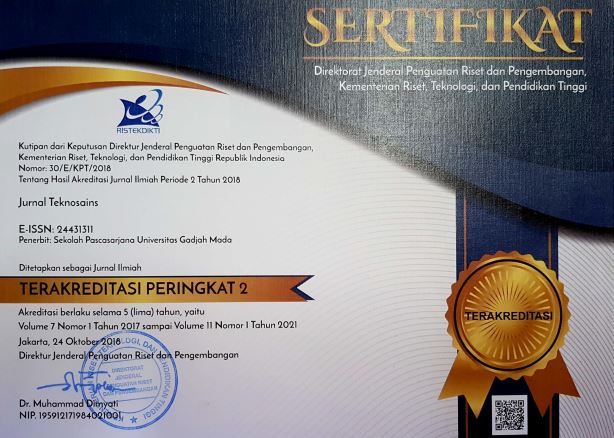Flash flood (Δ) risk and damage assessment in batu, East Java
Dekka Dhirgantara Putra(1), Bahrul Fikry Sofwany(2*), Hukma Zulfinanda(3), Iqbal Kamaruddin(4)
(1) Institut Teknologi Bandung
(2) Institut Teknologi Bandung
(3) Institut Teknologi Bandung
(4) Institut Teknologi Bandung
(*) Corresponding Author
Abstract
Hydrometeorological disasters are showing an increasing trend in Indonesia. Flash floods are part of a hydrometeorological disaster that has a significant livelihood impact. Flash Flood is triggered by the intensity of extreme rain, several actions of mitigation can be taken by early warning systems, hazard and risk mapping, community preparedness, and climate change adaptation. So, how does future land use have an impact, and how much loss will result from the flash flood disaster in Batu City? The hydrometeorological disaster that occurred in Indonesia was the Batu Flash Flood. The Flash Flood occurred on November 4, 2021. The flash flood has a lot of impact on many locations, including the Bumiaji District and Junrejo District. Based on the disaster history recorded, the flash flood in Batu has only happened once, but the impact was quite big because there are many houses in the midstream of Bulukerto. Based on the losses caused, this can be the basis for efforts to control the spatial pattern of Batu City in the future. The methodology used in this study is risk assessment. While the risk study related to delta (Δ) the study of flash floods risk in spatiotemporal prevention uses the 2030 spatial plan for delta prediction (Δ), which can later predict the consequences of climate change and meteorological disasters from flash floods in Batu. The results of this study are the delta (Δ) of flash flood risk and the damage assessment of the flash flood that occurred in Batu.
Keywords
Full Text:
PDFReferences
[1] Y. Zhang, Y. Wang, Y. Chen, F. Liang, and H. Liu, “Assessment of future flash flood inundations in coastal regions under climate change scenarios—A case study of Hadahe River basin in northeastern China,” Sci. Total Environ., vol. 693, p. 133550, 2019.
[2] R. Tichavský, A. Koutroulis, O. Chalupová, V. Chalupa, and K. Šilhán, “Flash flood reconstruction in the Eastern Mediterranean: Regional tree ring-based chronology and assessment of climate triggers on the island of Crete,” J. Arid Environ., vol. 177, no. February, 2020.
[3] G. Singh and A. Pandey, “Flash flood vulnerability assessment and zonation through an integrated approach in the Upper Ganga Basin of the Northwest Himalayan region in Uttarakhand,” Int. J. Disaster Risk Reduct., vol. 66, no. September, p. 102573, 2021.
[4] W. H. M. Wan Mohtar, J. Abdullah, K. N. Abdul Maulud, and N. S. Muhammad, “Urban flash flood index based on historical rainfall events,” Sustain. Cities Soc., vol. 56, no. January, p. 102088, 2020.
[5] K. Lin et al., “Assessment of flash flood risk based on improved analytic hierarchy process method and integrated maximum likelihood clustering algorithm,” J. Hydrol., vol. 584, no. February, p. 124696, 2020.
[6] M. Ma et al., “XGBoost-based method for flash flood risk assessment,” J. Hydrol., vol. 598, no. April, p. 126382, 2021.
[7] Badan Nasional Penanggulangan Bencana, Perka BNPB No 02 Th 2012 Tentang Pedoman Umum Pengkajian Risiko Bencana. 2012.
[8] A. B. Khajwal and A. Noshadravan, “An uncertainty-aware framework for reliable disaster damage assessment via crowdsourcing,” Int. J. Disaster Risk Reduct., vol. 55, no. January, p. 102110, 2021.
[9] Mercy Corps Indonesia, APEKSI, and CCROM, Panduan Penyusunan Kajian Risiko Iklim - Climate Risk Assessment (CRA). Jakarta: Mercy Corps Indonesia, 2017.
[10] Peraturan Daerah Kota Batu Nomor 7 Tahun 2011 Tentang Rencana Tata Ruang Wilayah Kota Batu Tahun 2010-2030. 2011.
[11] IPCC, Climate Change 2007: Impacts, Adaptation and Vulnerability. 2009.
[12] UNFCCC, “Adaptation Committee,” no. July, pp. 1–3, 2015.
[13] N. Khris Ayunani, “Penilaian Kerusakan Dan Kerugian Aset Permukiman Akibat Bencana Tanah Longsor Dengan Metode DaLA Desa Banaran Kecamatan Pulung Kabupaten Ponorogo,” no. December, pp. 272–277, 2017.
Article Metrics
Refbacks
Copyright (c) 2022 Dekka Dhirgantara Putra et al.

This work is licensed under a Creative Commons Attribution-ShareAlike 4.0 International License.
Copyright © 2024 Jurnal Teknosains Submit an Article Tracking Your Submission
Editorial Policies Publishing System Copyright Notice Site Map Journal History Visitor Statistics Abstracting & Indexing









